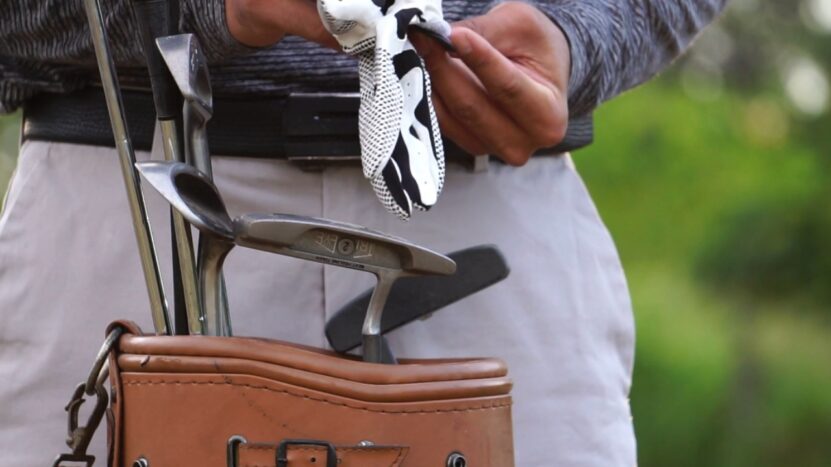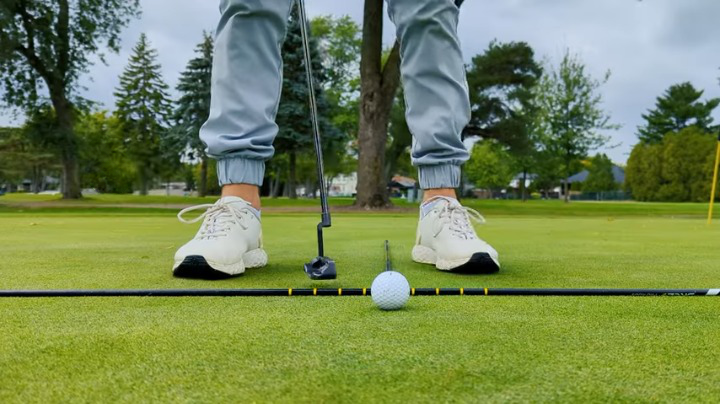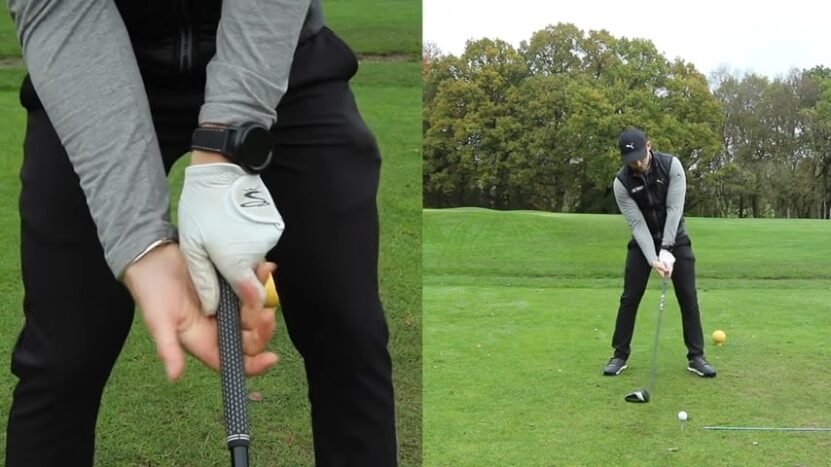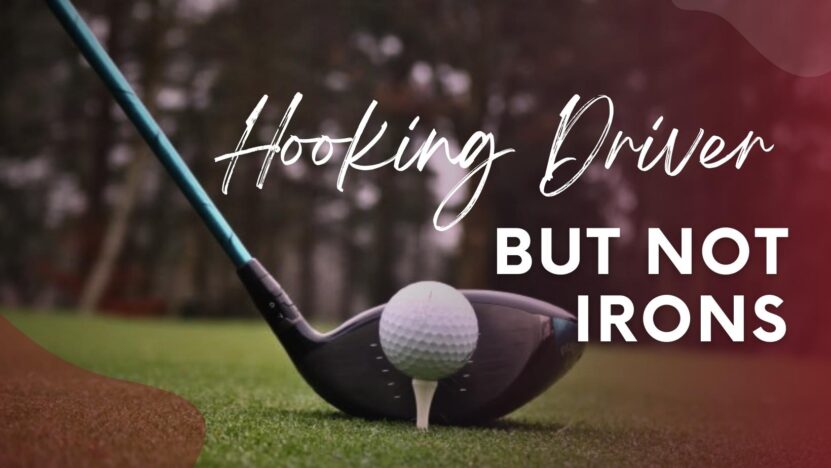There’s nothing more frustrating than hitting a perfect iron shot only to find yourself struggling with your driver, especially when your shots start hooking uncontrollably. If you’ve ever faced this predicament, you’re not alone. Many golfers experience this inconsistency, making it one of the most common issues on the golf course. But why does it happen, and how can you fix it?
In this article, we’ll explore the 6 main causes of hooking the driver but not the irons, and offer practical solutions to help you get your game back on track. By understanding the mechanics behind these issues and applying the right fixes, you’ll be well on your way to hitting straighter and more consistent shots in no time.
Equipment Mismatch

- Cause: One possible reason for hooking the driver but not the irons is an equipment mismatch. The driver and iron clubs are designed differently, and using clubs that are not suited to your swing can exacerbate existing issues in your game.
- Fix: First, ensure that your driver and irons have the appropriate shaft flex, loft, and lie angle for your swing. Consult with a professional club fitter to make any necessary adjustments.
Consider the weight and length of your driver compared to your irons. A longer, lighter driver can make it more challenging to control your swing, leading to a hook. Experiment with different driver specifications to find the one that works best for you.
Swing Plane Issues
- Cause: Another common cause of hooking the driver but not the irons is an improper swing plane. Golfers who swing too much from the inside to the outside (in-to-out) with their driver can create a hook shot. This problem may not be as evident with irons due to their shorter length and different clubhead design.
- Fix: To correct your swing plane, focus on keeping the clubhead outside your hands during the takeaway and downswing. Use alignment sticks or other training aids to help visualize and reinforce the proper swing plane.
Regular practice, combined with video analysis and guidance from a golf professional, can help you make the necessary adjustments to your swing.
Grip Issues

- Cause: The way you grip the club can significantly impact your shot shape. A strong grip, where both hands are rotated too far to the right for a right-handed golfer (or left for a left-handed golfer), can encourage a hook with the driver, while not affecting the irons as much due to their different clubhead design.
- Fix: To correct your grip, start by placing the club in the fingers of your left hand (for right-handed golfers) or right hand (for left-handed golfers) and ensure the “V” formed by your thumb and index finger points toward your back shoulder. Repeat with your other hand, making sure that the “V” points in the same direction.
Practice hitting balls with this neutral grip to see if it helps eliminate your hook.
The Effect of Driver Length
The length of the driver can have a significant effect on hooking the driver but not the irons. A longer driver can increase swing speed, but it can also make it more difficult to control the clubface and swing path, leading to a higher likelihood of hooking.
One way to counteract this is to use a shorter driver shaft. This can help improve control and accuracy, reducing the likelihood of hooking. Additionally, a shorter driver shaft can help promote a more consistent swing tempo, which can improve overall performance. However, it’s important to note that simply changing the length of the driver may not be enough to correct hooking.
Golfers should also focus on making adjustments to their swing path, grip, and body rotation to ensure that the clubface is square at impact. It’s also important to consider the loft of the driver, as lower-lofted drivers can also increase the likelihood of hooking. In some cases, a higher lofted driver can help reduce spin and promote a straighter shot.
Ultimately, finding the right driver length is a matter of personal preference and swing style. Golfers should work with a professional to identify the root cause of hooking and develop a plan for improvement, which may or may not include changing the length of the driver.
Timing and Release Issues
- Cause: The release of the club during the downswing can also contribute to hooking the driver but not the irons. A premature release or an overly active release with the hands can cause the clubface to close too much, creating a hook.
- Fix: To work on your timing and release, practice drills that promote a later release of the club. One such drill is the “lag” drill, where you focus on maintaining the angle between your forearm and the club shaft for as long as possible during the downswing.
Another useful drill is the “pump” drill, which involves swinging the club halfway down and then back up several times before finally making contact with the ball. This drill helps you feel the proper release point and encourages a smoother transition through impact.
Ball Position and Stance

- Cause: Incorrect ball position and stance can contribute to hooking the driver but not the irons. If you position the ball too far forward in your stance with the driver, it can cause you to swing more in-to-out, resulting in a hook. Additionally, if your stance is too closed (the front foot closer to the target line than the back foot), this can also encourage a hook.
- Fix: To correct your ball position and stance, follow these guidelines: For the driver, position the ball inside your front heel, ensuring that it is in line with the logo on your shirt or the inside of your front shoulder. For your stance, stand with your feet shoulder-width apart and parallel to the target line.
Avoid closing your stance by making sure your toes are aligned with each other. Practice these adjustments on the driving range to help create a more consistent and accurate shot shape.
Body Alignment and Swing Path
- Cause: Your body alignment and swing path can play a significant role in hooking the driver but not the irons. If your body is misaligned at the address, it can force you into an in-to-out swing path, which, as we mentioned earlier, is a leading cause of hooks.
- Fix: To improve your body alignment and swing path: Check your alignment by placing a club or alignment stick on the ground, parallel to your target line. Make sure your feet, hips, and shoulders are aligned with the stick. During your swing, imagine swinging the clubhead along the target line for an extended period, both on the backswing and downswing.
This visualization will help promote a more neutral swing path. Work with a golf professional to ensure that your body alignment and swing path are in sync for both your driver and irons.
Drills and Exercises
Hooking the driver but not the irons can be a frustrating issue for golfers, but there are drills and exercises that can help correct the problem. One effective drill is the “toe up” drill, which involves placing a tee in the ground about an inch in front of the ball and focusing on keeping the toe of the club up as it approaches impact. This can help promote a proper release and prevent the clubface from closing too much at impact.
Another drill is the “straight line” drill, which involves placing alignment sticks or clubs on the ground to form a straight line perpendicular to the target line. This can help golfers visualize the correct swing path and ensure that the clubface is square at impact. Exercises that focus on body rotation and hip mobility can also help correct hooking the driver but not the irons. For example, the “fire hydrant” exercise involves getting on all fours and lifting one leg out to the side, engaging the glutes and hips.
This can help promote a proper weight shift and body rotation during the swing. In addition, practicing with different clubs, such as hitting shots with a 3-wood or hybrid instead of a driver, can help golfers gain control over their swing and prevent hooking the driver but not irons.
Common Mistakes to Avoid
When trying to correct hooking the driver but not the irons, golfers may make common mistakes that can hinder their progress. One mistake is overcompensating for the hook by aiming too far to the right, which can result in even more wayward shots. Instead, aim for a straight shot and focus on correcting the issue at hand.
Another mistake is changing too many things at once. It can be tempting to make multiple swing adjustments all at once, but this can make it difficult to determine what’s working and what’s not. Instead, focus on making one adjustment at a time and practicing it until it becomes a habit. It’s also important to avoid rushing the swing.
When golfers feel pressure to hit the ball far or straight, they may rush their swing and sacrifice proper technique. This can lead to a variety of swing issues, including hooking the driver but not the irons. Finally, golfers may overlook the importance of practice and repetition when trying to correct a swing issue. It’s important to dedicate time to practicing the correct technique and ingraining it into muscle memory. This can take time and patience, but it’s crucial for long-term improvement.
FAQs
Can I fix a hooked driver on my own, or do I need to work with a golf professional?
While some golfers may be able to identify and correct the issue on their own, working with a golf professional can be helpful in identifying and addressing the specific issue.
Can a hooked driver cause any other swing issues?

A hooked driver can indicate an issue with the swing path, grip, or release, which can affect other aspects of your swing as well.
Why does hooking the driver affect my score?
Hooking the driver can result in a significant loss of distance and accuracy, which can make it more difficult to hit greens in regulation and score well.
Will fixing my hook automatically improve my score?
While fixing a hook can improve your score, it’s important to address other swing issues as well to see the full benefits.
How long does it typically take to fix a hooked driver?
The length of time it takes to fix a hooked driver can vary depending on the severity of the issue and the golfer’s ability to make changes to their swing.
Can I prevent hooking the driver in the first place?
Yes, you can take steps to prevent hooking the driver, such as working on your grip, swing path, and release, and practicing proper swing techniques.
Conclusion
Hooking the driver but not the irons can be a frustrating problem, but with a little patience and practice, it’s a challenge that can be overcome. By addressing equipment issues, refining your grip, correcting your swing plane, improving your release, adjusting your ball position and stance, and fine-tuning your body alignment and swing path, you’ll be well on your way to hitting straighter and more consistent shots with both your driver and irons.
Remember, golf is a game of continuous improvement. Be patient with yourself as you work through these fixes and consult with a golf professional to ensure you’re making the right adjustments for your unique swing. With dedication and practice, you’ll soon be enjoying the satisfaction of hitting your driver as accurately and consistently as your irons.

